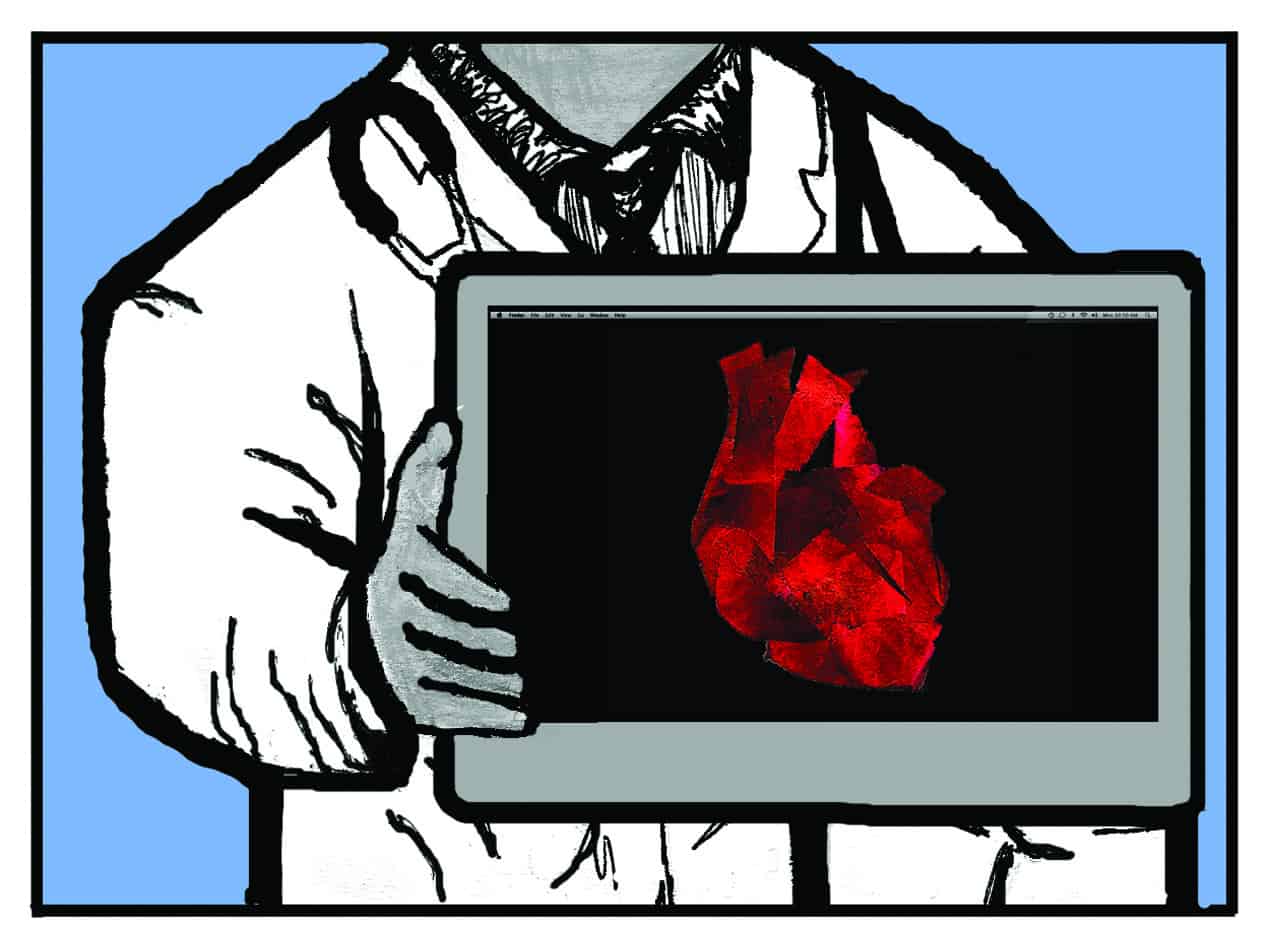The Canadian Cancer Society estimates that there will be about 177,800 Canadians diagnosed with cancer in 2011. What those patients will want is a sympathetic ear, something not all physicians know how to provide. But this might be changing soon. A recently-published study in the Annals of Internal Medicine had oncologists, cancer-specializing physicians, learning empathy from a computer. Researchers from Duke University have developed a computer program that teaches physician-patient empathy courses to cancer specialists. These new computer courses are relatively inexpensive compared to the large $3000 price tag per physician for similar courses.
In a nutshell, the researchers created a baseline to compare pre- and post-empathetic behaviour by contrasting an initial audiotaped encounter with later ones between the oncologists and patients with advanced cancer. The responses from the physicians were reviewed and corrected by the computer program, which gave them tips on how to better communicate empathy to patients. The results showed that compared to the control group, physicians who received the computer training responded empathetically twice as often. The control group received a one-hour lecture on empathetic communication but showed no improvement in response to patients’ emotional concerns or fears.
Physicians who used the computer program learned how to recognize and respond to patients’ unpleasant emotions, such as feelings of sadness, depression, or anxiety. They learned the important skill of how to sensitively convey prognosis, especially for more dangerous illnesses. The physicians improved at encouraging patients to talk about their feelings instead of ignoring and disregarding these discussions. These improved skills strengthened the physician-patient relationship; patients whose physicians were trained by the program perceived their doctors to be more empathetic and were more confident that they were being understood.
Many physicians wish to offer their patients a sympathetic ear but sometimes overlook emotional cues in the conversation in order to zone in on the appropriate medical treatment. Physicians may even choose to ignore these cues completely to speed up the conversation and attend to more patients. Then again, it could just be that some physicians don’t know how to acknowledge these emotions.
Empathy in physician–patient encounters also benefits physicians because they make patients more likely to comply with treatment and less likely to launch malpractice complaints.
So why is a lack of empathy a perennial problem in clinical settings in the first place? It could just be that physicians need to suppress empathetic responses in order to do their job correctly and safely. A 2007 study published in Current Biology investigated this question by having physicians who practice acupuncture undergo functional magnetic resonance imaging (fMRI) while watching videos of painful procedures, such as needles being inserted into people’s hands, feet, and areas around their mouth. Physicians showed significantly less response in brain regions involved in empathy and more of a higher cognitive response for pain. These results suggest that physicians may automatically feel empathy for the pain of others but quickly suppress it.
On the other hand, it could be that people who are less empathetic tend to gravitate towards healthcare professions. However, this seems unlikely, as studies have shown that physicians are often the most empathetic and caring towards the beginning of medical school and that they become steadily less empathetic with more clinical training. The most likely explanation may be the nature of medical training and the intrinsic demands of the profession.
Acknowledging human feeling is a skill that is not given as much attention as it should in medical school or resident training. It would help, since empathetic communication clearly improves overall physician–patient experience as well as the effectiveness of treatment.
The technology behind the computer program still needs to be developed and updated for privacy and security concerns. Although the program is not widely available, there are efforts underway for broader distribution.


